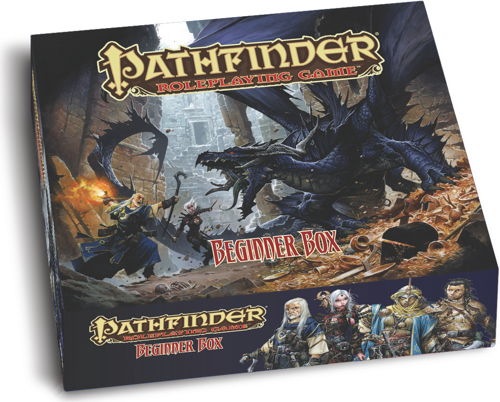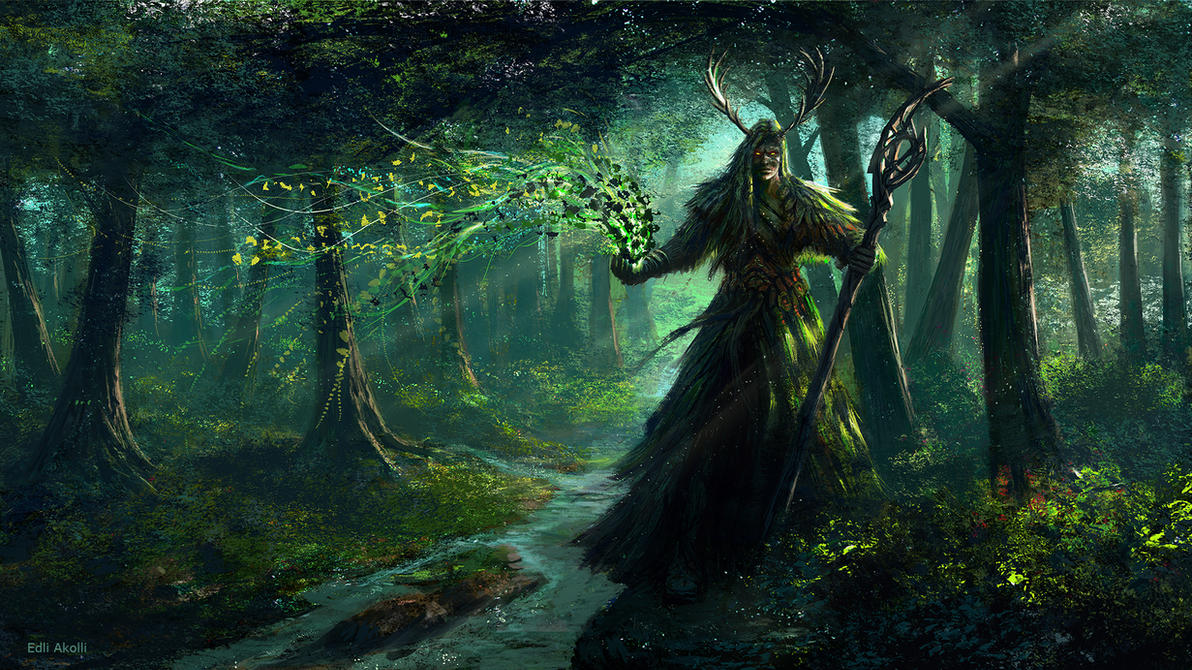So, Pathfinder
As everyone knows, Pathfinder took the gaming world by storm two years ago and hasn't relented since. Last year, according to some distribution sources, it was outselling Dungeons & Dragons. Something like that hasn't happened since the days of Vampire: The Masquerade.

Part of the fun of Pathfinder, in my opinion, is to look and see what the folks over at Paizo have done with the d20 system, or as some people call it - 3.5 D&D.
Many people call Pathfinder 3.75 Edition, essentially describing it as an upgrade of the 3.5 D&D system. In my mind, it is much more than that. The Pathfinder system is like getting a copy of someone's massive house-rulings of 3.5 D&D and browsing through them. And not just anyone's house-rules. Like, professional designer's house-rules.
The game certainly resembles the D&D 3.5 system at its core, but there have been lots of changes. Every class got tinkered with. Numerous spells were also changed. The grappling, bullrush, tripping, and disarming rules were changed.
And one effect of all of this tinkering has been a sort of unspoken invitation for us, the gamers, to come play in the playground and put up our own jungle gyms.
This is a different mentality of the culture that was set up by D&D 3.0 and 3.5. Even though those two editions never said you couldn't house-rule anything, there was a subconscious idea in the larger gamer community that you had to stick to the rules-as-written. Of course, I speak in broad terms, here. There were plenty of individual GMs who house-ruled their own games.
But that brings me to some of my latest endeavor - my own Pathfinder tinkerings. Recently, I adapted Pathfinder to fit the setting of Mythic Ireland, as well as a modern setting.
Mik's been most interested in that, so I'll start by talking about that and give an example of how Pathfinder invites tinkering.
Our Plant Druid
We had a player who wanted to play an exclusively plant-type druid. One that could, you know, summon plants. Make them grow. Have them attack. Kind of like Marvel's Plantman.
But the problem was that the druid, as is, is not built that way. The class is a summoner class. It's built to spam the enemy with lots of creatures and then druids can turn into creatures themselves. The guy is supposed to be a creature class.
Looking at the druid alternates in the Advanced Player's Guide, however, gave us a lot of ideas and showed us the Pathfinder teams design concepts.
For one, all of the classes have certain abilities that belong only to them. For example, if you look at all of the class variants, you'll see that only the Barbarian gets Rage. Only the Cleric gets Channel Positive Energy. And only the Druid gets Wild Shape. So, that gave us a framework from which to start.
For example, one of the players suggested trading out the Druid summoning ability for the Cleric's Channel Positive energy ability. While that sounded good on paper, I ruled that the CPE was something that was the distinct province of the Cleric. As I looked over their Druid class variants, I saw that a lot of the druids traded out the ability to spontaneously cast summoning spells for the ability to spontaneously cast Domain spells. So, we did that. Instead of begin able to summon lots of monsters, our Plant Druid can spontaneously cast Plant Domain spells. So, at 1st level, he can cast Entangle whenever he wishes - which makes him really "feel" like Plant Druid. At 3rd level, he can cast Barkskin whenever he wishes. Again, it helps make him feel like a Plant Druid.
We also changed his Wild Shape ability. We didn't take it away, because the Pathfinder guys consider that to be the Druid's core ability - like Channeling Positive Energy for the Cleric. So we altered it a little. Not wanting to be an animal guy, I ruled that he could turn into different kinds of elementals at 4th level instead. That allowed him not be quite as animal-y. Normally, a druid gets that at 6th level. So, our Plant Druid will be able to turn into animals at 6th level instead. And when he does, he will be considered to be at -2 levels when determining what kinds of animals he can Wild Shape into. He gets to turn into Plant creatures still at 8th level.
So, just by changing two things on the Druid, we made the class into a Plant Druid. To recap, that's spontaneously casting Plant Domain spells instead of Summoning spells. Tweaking Wild Shape. That's it!


An excellent post with some serious Pathfinder love. I honestly adore Pathfinder, even though I have not had a chance to play it, yet. I have often described Pathfinder as what a D&D 4E could have been if they hadn't completely "wrecked" it.
ReplyDelete-Eli
Thanks for this!! 3.5 was where I spent the most enjoyable time of my roleplaying years, I recently got rid of all my AD&D stuff since nobody around seemed interested in playing an old version.
ReplyDeleteI didn't really look into pathfinder much because the only RPG'ing I've done recently is in the 40k universe with Deathwatch. This might convince me to pick this up though. Cheers!
Are the 3.5 books compatible with Pathfinder? And would you recommend it to someone who only plays D&D 3.5?
ReplyDeleteThe 3.5 books are definitely compatible with Pathfinder, Deadmeat. I think that was one of their design precepts - to allow people to still use the stuff on their shelves. Would I recommend it to someone who only plays 3.5? Definitely.
ReplyDeleteI suppose the question would be - what are you looking for? If you are satisfied with 3.5 and with your 3.5 materials, then there is not necessarily any reason to switch over.
However, it's nice to get a new and shiny book. It's nice to see how they've changed this or that. We like the system better. It seems to be more balanced and even more customizable.
Nice ideas. I've never played D&D only ever played Neverwinter nights, Baldurs Gate so only picked up a few bits and pieces from those
ReplyDelete